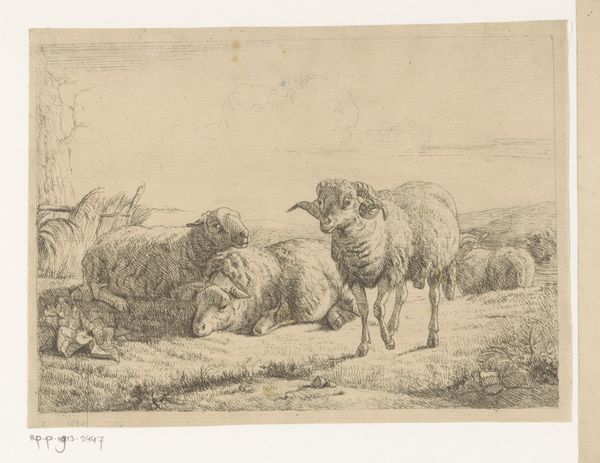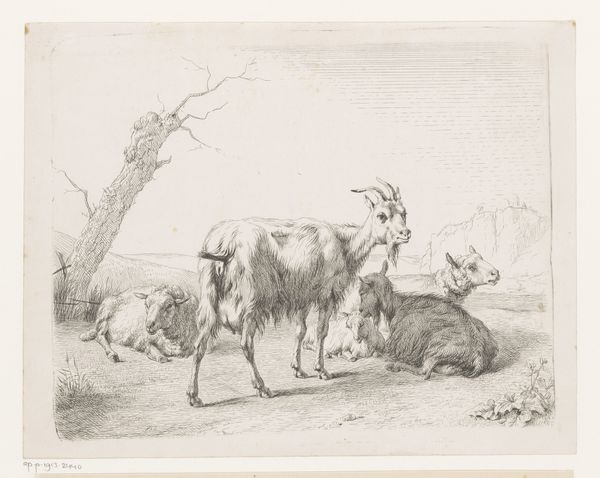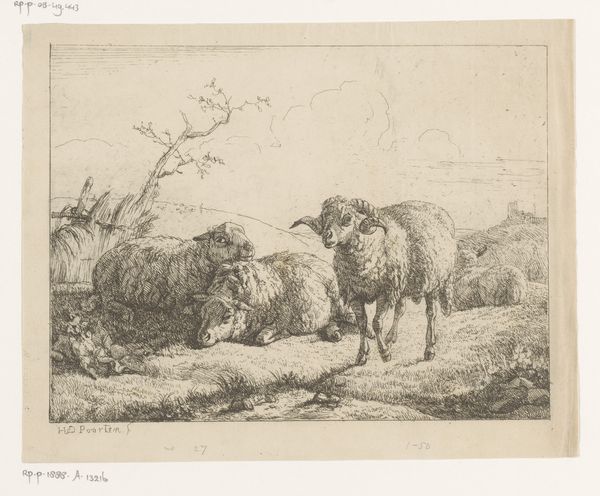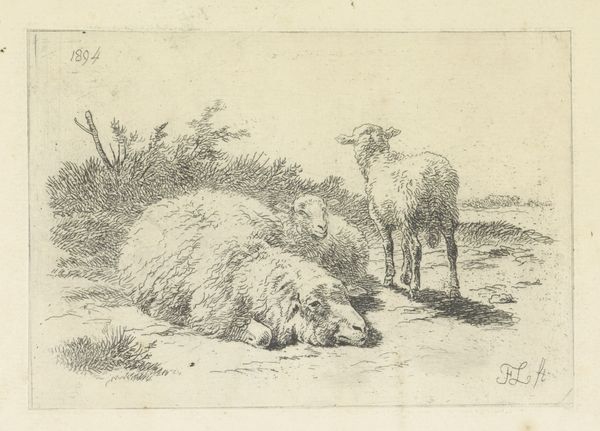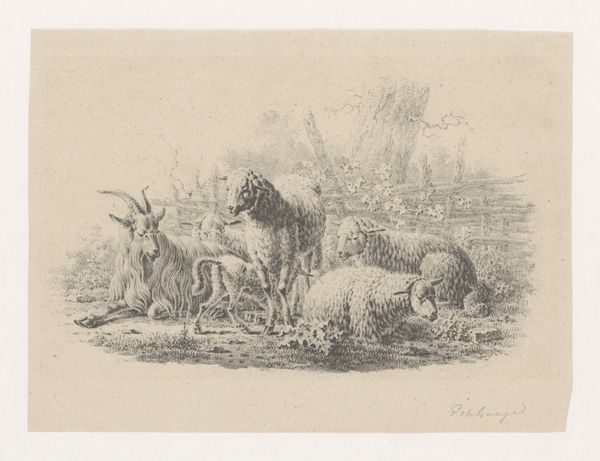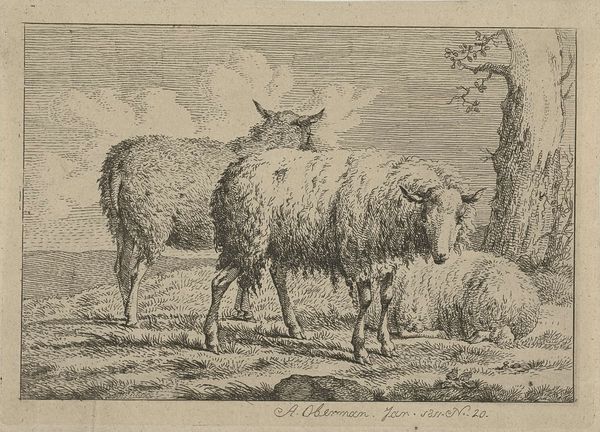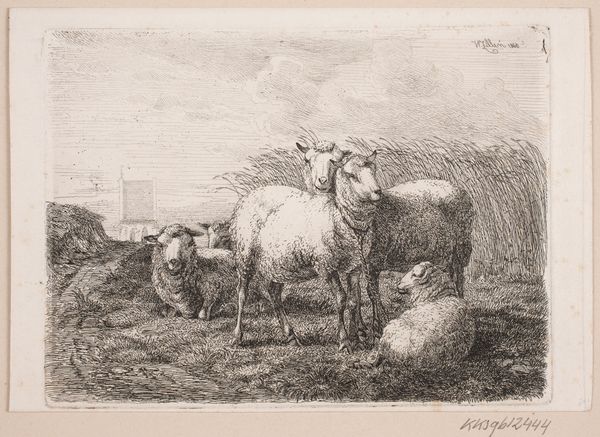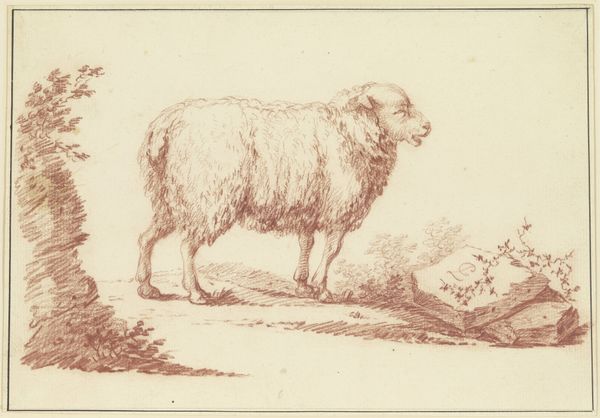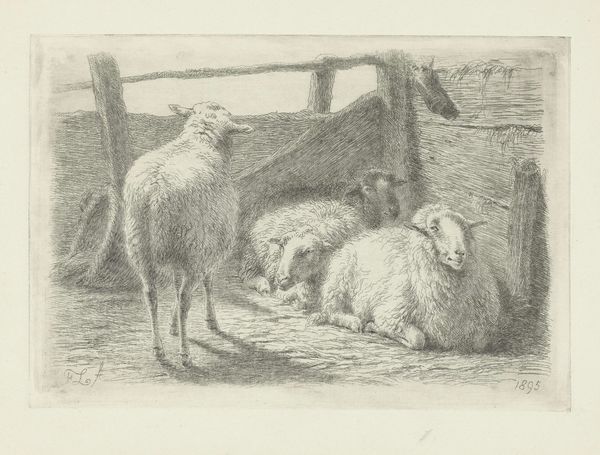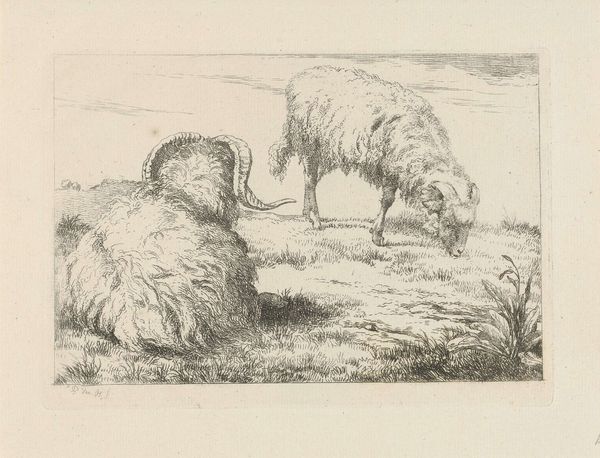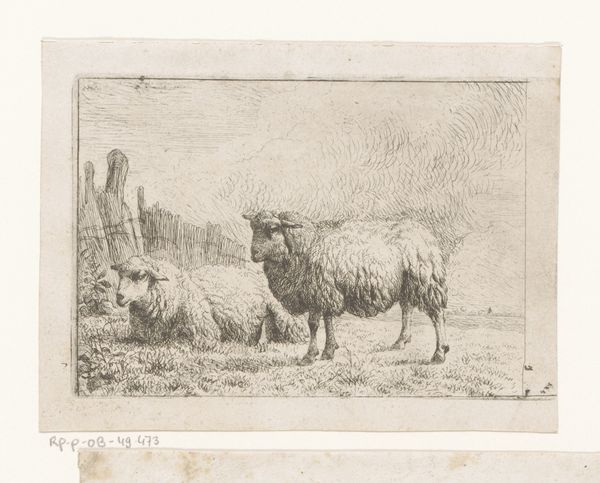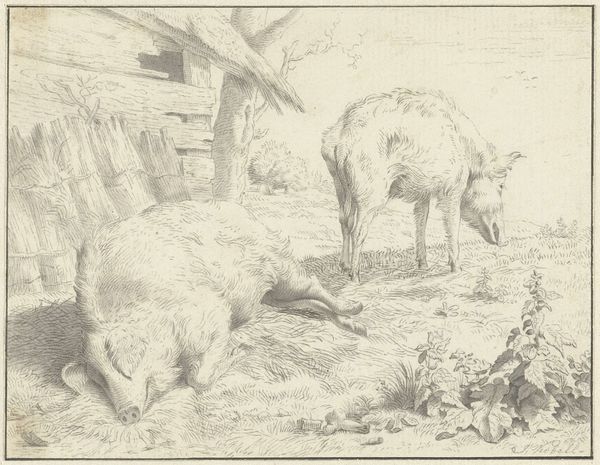
print, etching, engraving
# print
#
etching
#
landscape
#
genre-painting
#
engraving
#
realism
Dimensions: height 139 mm, width 197 mm
Copyright: Rijks Museum: Open Domain
Editor: Frans Lebret's etching "Sheep and Lambs in the Meadow," created in 1894, presents such a serene rural scene. I’m particularly drawn to the delicate lines and the way the light seems to filter through the wool of the sheep. What can you tell me about the historical context that might have shaped this work? Curator: Given that Lebret worked during a period when Realism and genre painting were popular, how do you think social and cultural shifts influenced his choice of subject matter? Think about the rise of urban life at the time. Editor: It almost feels like a deliberate contrast—an idyllic escape from the industrialized city. Was there a market for this kind of imagery then, a sort of idealized vision of rural life that people wanted to buy into? Curator: Exactly. There was definitely a growing interest among urban populations to reconnect with, or perhaps imagine, a simpler, more "authentic" way of life. Picturesque landscapes with grazing animals had a strong symbolic association with the traditional countryside life, which faced changes due to increased industrialization and modernization. Etchings and prints made art more accessible. Who might have bought a print like this and where would they have displayed it? Editor: Maybe someone who had moved to the city but still yearned for a connection to their rural roots. They might hang it in their home, perhaps as a nostalgic reminder. It’s interesting how the *idea* of the countryside was being sold and consumed. I suppose the success of paintings like this depended upon it not showing the hardships of farm life, correct? Curator: Indeed. And it raises a point: to what extent are these images objective representations versus constructions designed to cater to specific audiences and reinforce certain ideas about rural life and labour? Consider, also, the role of institutions such as art academies and salons in promoting specific types of art and subject matter. Editor: That's a powerful thought. This makes me think about what role museums played in shaping such pastoral works during that time. I really learned a lot, seeing art's public roles in that way. Curator: It's insightful to consider how museums were influencing what art was produced, what it said, and who was looking at it. Thank you.
Comments
No comments
Be the first to comment and join the conversation on the ultimate creative platform.
